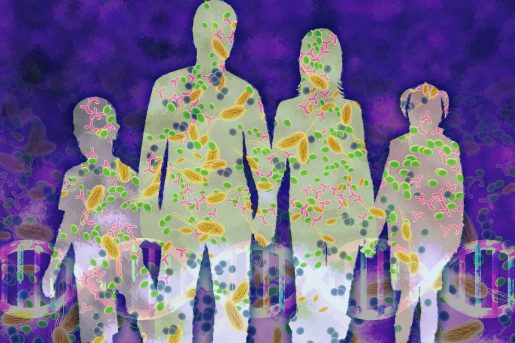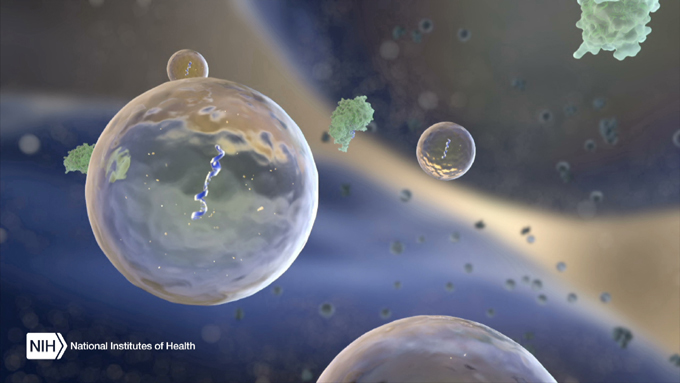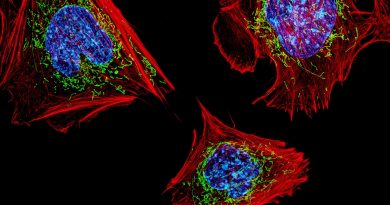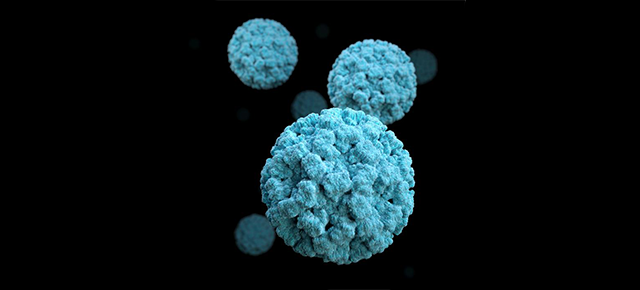Understanding the world within: study reveals new insights into phage–bacteria interactions in the gut microbiome

A world of microbes resides within the gut of every human being. This vast microbial community, the microbiome, which includes bacteria and viruses, has repeatedly demonstrated its ability to actively contribute to both health and disease.
Researchers have learned a good deal about the bacterial communities that live in the human gut. For instance, they have discovered that these bacteria extensively metabolize the food we eat, drive normal development of the immune system and, to our detriment, include some opportunistic microorganisms that can cause disease under certain conditions.
On the other hand, the contributions of viruses in the gut microbiome to human health and disease are not known to the same extent as those of bacteria. A new study published in Nature Microbiology has changed this.
Researchers at Baylor College of Medicine have taken the lead on a project to investigate whether certain viruses known as bacteriophages, or phages, which specifically infect bacteria but not human cells, affect the development of type 1 diabetes in young children. Because phages exert pressure on the bacteria they infect and some phage genomes encode virulence factors and toxins, a role for specific phages or communities of phages in human health seems plausible.

“We think that phages can affect bacterial survival or behavior and this in turn could influence human health,” said first author Dr. Michael J. Tisza, assistant professor of molecular virology and microbiology at Baylor.
The current study re-analyzed samples collected as part of The Environmental Determinants of Diabetes in the Young (TEDDY) study with the aim to specifically profile the combined phage-bacteria community. The TEDDY cohort was built with children at risk for developing immunity to the cells that produce insulin and/or type 1 diabetes. Previous TEDDY studies investigated whether gut bacteria and human viruses affected the development of type 1 diabetes. While they did not find a clear association with gut bacteria, there was an association with human viruses.
Phages are challenging to study
“Phage genetic data has been available for some time. We learned that phage genomes are very diverse, have little similarities among them and are very small, and these posed significant technical challenges to their analysis,” Tisza said. “We approached the challenge by developing a new computational tool that allowed us to analyze phage signals.”

“Using our new analytical tool, we profiled the combined phage-bacteria communities in 12,262 stool samples from 887 participants of the TEDDY study during their first four years of life,” said co-corresponding author Dr. Sara J. Javornik Cregeen, assistant professor of molecular virology and microbiology at Baylor. “With this approach we dissected the dynamic changes in the composition of the communities of phages and bacteria in the developing gut and gained new insights into their interactions.”
The researchers found that certain bacteria thrive at different stages of human development, and this was similarly observed for phages in this study. “However, the pace at which phage communities changed was quicker than that of bacteria,” Javornik Cregeen said.
“We think this points to an arms race between bacteria and their phages in which the bacteria evolve acquiring mutations that allow them to escape predation from the phages that were infecting them, and then that opens up an opportunity for a new phage to infect the bacteria,” Tisza said.
As it relates to type 1 diabetes, the team didn’t find any major phages or phage communities linked to a greater or lesser risk of developing the disease in this cohort. The findings nevertheless contribute to an improved perspective on microbiome development that reflects a dynamic interplay between phages and bacteria. The microbiome starts to develop as bacterial species enter the newly born child and begin to colonize the gut. As the child grows, a succession of bacterial species follows in response to diet changes and the development of the immune system. With this bacterial succession, phage communities also change, reflecting bacterial availability.
“As we analyzed the microbiome many times during the first years of life, it became clear that the gut of each participant is exposed to many more distinct phages than distinct bacteria, suggesting that the immune system may be exposed to more viral stimulation than was previously considered,” Tisza said.
“We hope that our findings will result in a better understanding of phage-bacteria interactions that can lead to improved therapeutic approaches to disease,” Javornik Cregeen said.

“Manipulation of the microbiome continues to be a promising path to treat a variety of diseases that involve the immune response, cardiovascular health and brain function, among others,” added co-corresponding author, Dr. Joseph Petrosino, chair and professor of molecular virology and microbiology and director of the Center for Metagenomics and Microbiome Research at Baylor. Petrosino also is Baylor’s Chief Scientific Innovation Officer and member of the Dan L Duncan Comprehensive Cancer Center. “As clinicians try to limit unnecessary antibiotic use as a primary means to combat the rise of antibiotic-resistant infections, studies such as this enable phage-based strategies to shape microbial communities to improve health and fight infectious diseases.”
The researchers are interested in continuing to explore the relationships between bacteria and phages. For instance, how phages influence the response of bacteria to perturbations such as antibiotics, change in diet or introduction of new bacteria.
By evaluating temporal trends in the guts of developing children, this study helps to lay the groundwork for therapeutics and diagnostics that aim to leverage the microbiome and its constituents.
Richard E. Lloyd, Kristi Hoffman and Daniel P. Smith at Baylor College of Medicine and Marian Rewers at the University of Colorado-Aurora are co-authors of this work. For a complete list of financial support sources for this study, see the publication.
Follow From the Labs on X, BlueSky and Instagram!



